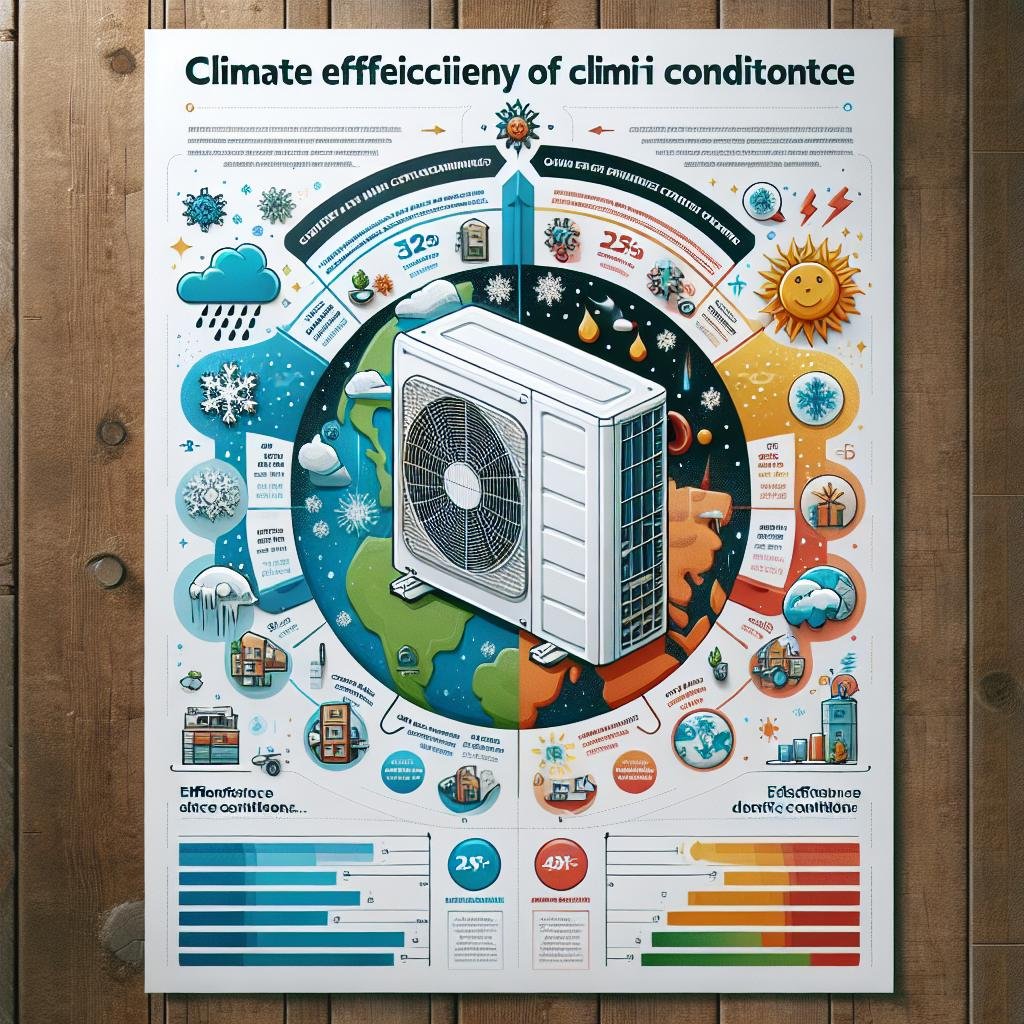Welcome to the ultimate guide on selecting the perfect energy efficient mini split AC system for your home, no matter what climate you reside in! From the sweltering heat of the tropics to the chilly winters of the north, finding the right system tailored to your unique needs is crucial for keeping your space comfortable without breaking the bank. Join us as we dive into the world of mini splits and learn how to size and select the ideal unit for your climate. Let’s stay cool, together!
Understanding the Impact of Climate on Mini Split AC Efficiency
When it comes to selecting the right mini split AC system for your home, one of the key factors to consider is the climate you live in. Different climates can have a significant impact on the efficiency and performance of these systems. In warmer climates, for example, you’ll want to look for a mini split AC unit that is designed to handle higher temperatures and provide efficient cooling without working overtime. On the other hand, in colder climates, you’ll want a system that can effectively heat your home without driving up your energy bills.
For those living in regions with extreme temperatures, it’s essential to properly size your mini split AC system to ensure optimal efficiency. Undersized units may struggle to keep up with cooling demands in hot climates, while oversized units can lead to short cycling and wasted energy in colder climates. Additionally, considering factors such as insulation, sun exposure, and humidity levels can help you choose a mini split AC system that is best suited for your specific climate. By taking these factors into account, you can maximize the efficiency and performance of your mini split AC system, keeping your home comfortable year-round while minimizing energy costs.
| Climate | Recommended Mini Split AC System |
|---|---|
| Hot and Humid | High SEER rating for energy efficiency and dehumidification capabilities |
| Cold and Dry | Heat pump function for efficient heating and low operating costs |

Choosing the Right BTU Capacity for Your Mini Split AC
When it comes to , it’s important to consider the climate you live in. Different climates require different cooling capacities to ensure optimal performance and energy efficiency. Here’s a brief guide to help you select the right BTU capacity for your mini split AC based on your climate:
- Tropical Climates: In hot and humid climates, such as the tropics, you’ll need a higher BTU capacity to effectively cool your space. Look for mini split AC units with a higher BTU rating to ensure efficient cooling in these extreme conditions.
- Moderate Climates: For moderate climates with mild summers, a lower BTU capacity mini split AC unit should be sufficient to keep your space comfortable. Choose a unit with a lower BTU rating to save on energy costs without sacrificing cooling performance.

Selecting Energy Efficient Features for Optimal Performance
When it comes to selecting energy efficient mini split AC systems for different climates, it’s important to consider the size of the unit for optimal performance. **Choosing the right capacity** ensures that the system can efficiently cool or heat the space without consuming unnecessary energy. In warmer climates, a higher BTU rating may be necessary to combat the intense heat, while in cooler climates, a lower BTU rating may suffice.
Additionally, **considering the Energy Efficiency Ratio (EER)** of the mini split system is crucial for maximizing energy savings. Units with a higher EER require less energy to operate, making them more cost-effective in the long run. **Investing in a system with variable-speed technology** can also improve efficiency, as it allows the unit to adjust its output based on the specific cooling or heating needs of the space.
Factors to Consider When Installing Mini Split AC Systems
When installing mini split AC systems, it’s crucial to consider the size of the unit to ensure it adequately cools or heats the space. Factors such as the square footage of the room, ceiling height, insulation, and even the climate of the region play a significant role in determining the right size system. Oversized units can lead to inefficient operation and increased energy costs, while undersized units may struggle to maintain a comfortable temperature. Consulting with a professional to perform a load calculation is recommended to accurately size the system for optimal performance.
Another important factor to consider when selecting a mini split AC system is energy efficiency. Look for units with high Energy Efficiency Ratio (EER) and Seasonal Energy Efficiency Ratio (SEER) ratings to ensure lower energy consumption and reduced utility bills. Additionally, consider features such as programmable thermostats, inverter technology, and variable speed settings to further enhance efficiency. For regions with extreme climates, choosing a system with a high Heating Seasonal Performance Factor (HSPF) for heating and a low temperature rating for cooling is essential for year-round comfort and savings.
Q&A
Q: How do I choose the right size mini split AC system for my home?
A: Sizing your mini split AC system is crucial to its efficiency and effectiveness in cooling your space. Consider factors such as the size of your room, insulation levels, ceiling height, and climate to determine the appropriate BTU capacity for your system.
Q: How does the climate affect the selection of a mini split AC system?
A: Different climates have varying cooling needs, so it’s important to select a mini split AC system that can handle the demands of your specific climate. For example, homes in hot and humid climates may require a higher capacity system to combat the heat, while those in colder climates may only need a smaller unit for occasional use.
Q: What are the benefits of choosing an energy efficient mini split AC system?
A: Energy efficient mini split AC systems not only help reduce your carbon footprint and energy bills, but they also provide precise temperature control, improved indoor air quality, and quieter operation compared to traditional HVAC systems.
Q: Are there specific features I should look for in an energy efficient mini split AC system for different climates?
A: Yes, for hot and humid climates, look for systems with dehumidification capabilities to keep indoor moisture levels in check. In colder climates, opt for systems with high heating efficiency ratings and smart thermostats for optimal energy savings.
Q: How can I ensure proper installation and maintenance of my mini split AC system?
A: To ensure your mini split AC system operates efficiently, always hire a professional HVAC technician for installation and schedule regular maintenance appointments to keep your system running smoothly. Don’t forget to clean or replace filters as needed to maintain optimal performance.
Key Takeaways
As you embark on the journey of selecting the perfect energy efficient mini split AC system for your specific climate, remember that knowledge is power. By considering factors such as climate, insulation, and room size, you can ensure that your AC system not only keeps you comfortable but also helps reduce your energy bills. With the right system in place, you can beat the heat (or cold) and stay environmentally conscious at the same time. So go forth, armed with this newfound knowledge, and choose the perfect mini split AC system for your unique needs. Stay cool (or warm), friends!

